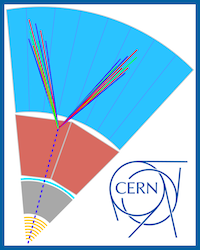Speaker
Description
The BDF/SHiP experiment is a general purpose intensity-frontier experiment for the search of feebly interacting GeV-scale particles and to perform neutrino physics measurements at the HI-ECN3 (high-intensity) beam facility at the CERN SPS, operated in beam-dump mode. The CERN Research Board recently decided in favour of BDF/SHiP for the future physics programme of this facility. BDF/SHiP will take full advantage of the available 4x10$^{19}$ protons per year at 400 GeV. The experimental setup consists of two complementary detectors downstream an active muon shield. The magnetic muon shield is placed directly after the target region and is designed to deflect the muons produced in the beam dump and thus reduce the flux in the detectors to an acceptable level. The first detector system, the scattering and neutrino detector (SND), consists of a light dark matter (LDM) / neutrino target with vertexing capability in the form of tungsten plates, alternated with emulsion films and fast electronic detector planes, followed by a muon spectrometer. The second detector system, the hidden sector decay spectrometer (HSDS), consists of a 50 m long decay volume followed by a large spectrometer, a timing detector and a PID system. This unique setup offers an unprecedented sensitivity to decay and scattering signatures of models with feebly interacting particles, such as dark-sector mediators and light dark matter, and allow high statistics studies of tau neutrino interactions.
